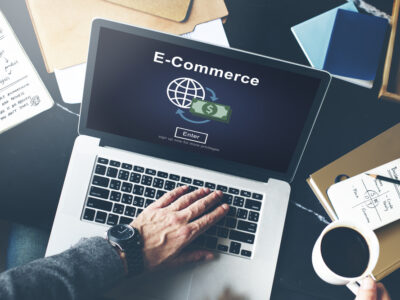Digital marketing is undergoing massive changes.
In marketing automation, we’re quickly moving away from “push”-based campaigns, where mass audiences would be bombarded with the same general message, towards a more personalised, relevant communication with customers.
If you’re in marketing, you probably had your fair share of targeted and personalised content – it’s a big ask.
Unfortunately for many brands, their marketing is much less sophisticated than their customers and, as a result, they keep losing sales left and right.
Our experience shows that with the right tools and practices, these mistakes can be corrected to give customers what they want, when they want, where they want it.
Enter omnichannel marketing.

The two mistakes you’re making with your marketing
Mistake #1: You are not where your customers expect you to be
Marketing automation will help you reach customers at the right time with the right message – and that’s already amazing.
But it seems that customer expectations are developing faster than marketing automation tools, as we’re still unable to reach customers on the right channels.
Customers are now all over the place – social media, Google and messaging apps. But your products aren’t, so you’re missing out on potential sales.
Generic marketing automation tools can only get you into customers’ inbox, but that’s not nearly enough to capture and hold people’s attention while their shopping.
If you’re placing all your bets on email marketing alone, you’re most likely losing out to your competition.
Mistake #2: You offer a fragmented experience
Most marketers have to juggle multiple automation tools to reach customers on different channels.
It’s inefficient and tends to create “bumps” in your communication. Besides, it’s almost impossible to keep your messaging smooth and seamless across the range of different apps, which is not great for your brand.
So although marketing automation deserves a lot of praise, it doesn’t quite compare with omnichannel marketing, which is the next step in marketing evolution.
What is omnichannel marketing and why you should pay attention
First of all, omnichannel marketing is not the same as multichannel marketing.
Where multichannel marketing focuses on allowing customers to find you and complete transactions in each channel, omnichannel marketing assumes the customer’s perspective and aims to orchestrate the experience across all channels to make it consistent, seamless and integrated.
Omnichannel is all about anticipating your customer’s needs and making the technically complex transitions between different channels feel fluid and effortless for the user.
Have you ever begun shopping on a mobile app, then jumped to your desktop computer expecting the brand to know exactly what happened and how they should cater to those changes?
That’s just one of the expectations shoppers might have when interacting with your brand.
The point is, omnichannel marketing ensures that your messaging in all channels is adjusted automatically based on the latest interaction with the customer.
Another important difference between the two practices is that omnichannel marketing uses one platform to manage all channels. This way, data can quickly be shared and updated across all tools.
For instance, when a user interacts with your online ad, that determines what other channels will do – what message will be used in your push notifications, what kind of pop you will use and after the sale, what the text message will say.
Embrace the huge potential of omnichannel marketing
When you’re just starting out, all your efforts are focused on new user acquisition and getting the sales going. So a single-channel or multichannel approach could be an effective, albeit a short-term strategy.
Once you get a feel for how eCommerce marketing really works (and why you need to focus on building repeat sales), you’ll see that the choice between single-channel vs. omnichannel marketing is what separates new marketers from seasoned eCommerce pros.
Automation, customer retention and segmentation are vital drivers for growth and a crucial foundation for business sustainability. Once you arrive at that realisation, graduating to omnichannel marketing is a natural next step.
It’s worth stressing that omnichannel begins with email marketing.
Since customers often use the same email address to sign up to contests, create online social media or shopping accounts and even to continue reading relevant content online, marketers can leverage the data collected from various channels to create a holistic shopping experience for customers.
To make the most out of omnichannel marketing, marketers should embrace marketing automation tools to collect as much data from their campaigns as possible.
MailChimp is probably the best-known marketing automation platform built to support these needs.
However, there is a wealth of other popular tools that can offer just as much and sometimes more value for your money. Omnisend is one of MailChimp alternatives for eCommerce marketers, for example, and every industry is likely to have its own go-to tool.
As soon as you take a step forward with omnichannel campaigns, you’ll start seeing significant changes in your customer satisfaction and sales.
According to Marketing Metrics, existing customers are 60-70% more likely to buy more products and services from you, compared to just 5-20% for new visitors.
Even better, increasing customer retention by just 5% could boost your profits by 25-95%.
Here are a few other telling stats about omnichannel marketing and user experience:

All in all, omnichannel marketing has come about in response to consumers’ growing expectations for brands to communicate in a way that’s relevant and compelling.
So it’s all about the user experience and fluid transitions between various channels as customers go down the sales funnel.
Why omnichannel gets unbeatable results
Shifting to omnichannel marketing enables you to provide users with a unified experience, and that really matters.
It consistently leads to higher user engagement as well as better sales and brand awareness.
Embracing omnichannel will allow you to:
- Provide users with a fluid, seamless experience
- Control your channels from a single place
- Seamlessly integrate all your channels
- Improve your ROI
- Increase brand awareness
- Build a sustainable, long-term business
When you think about the big players like Amazon, for example, it’s the only kind of approach they use.
If you’re ready to upgrade your online store to be a sales-driven eCommerce business that can enjoy a consistent and sustainable growth, consider graduating to omnichannel marketing. It’s the only way forward.









Comments